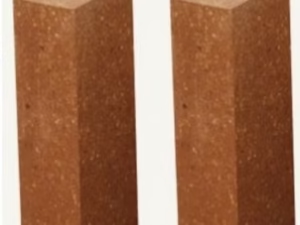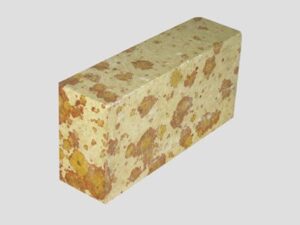Description
Silica Bricks: The Unsung Heroes of High-Temperature Industries
Silica bricks, often overlooked but undeniably crucial, are the workhorses of industries demanding exceptional high-temperature resistance. These refractory materials, primarily composed of silica (SiO2), stand up to the extreme conditions found in steelmaking, glass manufacturing, and coke production, enabling processes vital to modern society. But what makes them so special, and where are they truly essential?
The Power of Silica:
The secret to silica bricks’ resilience lies in the unique properties of silica. Key characteristics contributing to their high-temperature performance include:
- High Refractoriness Under Load (RUL): Silica bricks maintain their structural integrity and resist deformation even under significant pressure at scorching temperatures. This is critical in applications like furnace roofs where the bricks bear substantial weight.
- Dimensional Stability: Unlike many other refractories, silica bricks exhibit a low coefficient of thermal expansion and a unique volume expansion during heating. This expansion, carefully controlled during manufacturing, compensates for potential shrinkage at operating temperatures, minimizing cracking and spalling.
- Resistance to Acidic Slag: While susceptible to attack by alkaline substances, silica bricks demonstrate excellent resistance to acidic slag, a common byproduct in many industrial processes.
- High Thermal Conductivity: Silica bricks conduct heat reasonably well, which can be advantageous in certain applications, allowing for efficient heat transfer.
Manufacturing Process:
The production of silica bricks involves a carefully controlled process that dictates their final performance. The process typically consists of:
- Raw Material Selection: High-purity silica sand, usually containing at least 96% SiO2, is the primary ingredient. Minor additions like lime (CaO) and iron oxide (Fe2O3) are added as fluxes to promote sintering at lower temperatures.
- Mixing and Shaping: The raw materials are meticulously mixed with water and binder to form a plastic mass suitable for shaping. This mass is then molded into the desired brick shapes using various methods, including pressing and extrusion.
- Drying: The molded bricks are carefully dried to remove moisture and prevent cracking during firing. This process can take several days or even weeks.
- Firing: The dried bricks undergo a high-temperature firing process in kilns, typically reaching temperatures between 1450°C and 1500°C. This firing process transforms the raw materials into a strong, durable ceramic structure. The controlled expansion during firing is crucial for achieving dimensional stability in service.
Applications Across Industries:
Silica bricks play a vital role in numerous industries, most notably:
- Steelmaking: They line the roofs and walls of open-hearth furnaces, electric arc furnaces, and other steelmaking vessels, enduring the extreme temperatures and corrosive environments involved in steel production.
- Coke Production: Silica bricks are essential in the construction of coke ovens, where coal is heated to produce coke, a vital fuel for iron and steelmaking. Their resistance to thermal shock and chemical attack from coal gases is crucial.
- Glass Manufacturing: They are used to line glass melting furnaces, providing the necessary high-temperature resistance and chemical compatibility with molten glass.
- Lime Kilns: Used in the construction of lime kilns, resisting the high temperatures and corrosive environment inherent in the lime production process.
Advantages and Disadvantages:
Like any material, silica bricks have their pros and cons:
Advantages:
- Excellent high-temperature performance.
- Good dimensional stability.
- Resistance to acidic slag.
- Relatively high thermal conductivity.
Disadvantages:
- Susceptible to alkaline attack.
- Relatively low resistance to thermal shock (rapid temperature changes).
- Brittleness compared to some other refractories.
The Future of Silica Bricks:
While alternative refractory materials are constantly being developed, silica bricks remain a cost-effective and reliable solution for many high-temperature applications. Ongoing research focuses on improving their resistance to thermal shock and alkaline attack through modified compositions and manufacturing processes. As industries continue to push the boundaries of high-temperature processes, silica bricks will undoubtedly continue to evolve and contribute to progress.
In conclusion, silica bricks are more than just building materials; they are the unsung heroes of countless industries, enabling the high-temperature processes that underpin modern manufacturing and progress. Their unique properties and carefully controlled manufacturing ensure their continued relevance for years to come.























Reviews
There are no reviews yet.